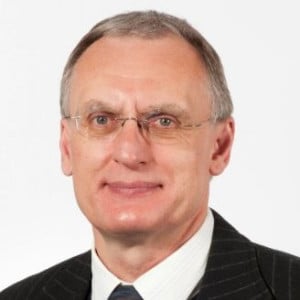Quantum Metrology
A special issue of Technologies (ISSN 2227-7080). This special issue belongs to the section "Quantum Technologies".
Deadline for manuscript submissions: closed (30 July 2016) | Viewed by 28237
Special Issue Editor
Interests: quantum information; quantum communication and cryptography; quantum networking; quantum imaging; linear-optical quantum computing
Special Issues, Collections and Topics in MDPI journals
Special Issue Information
Dear Colleagues,
The world is currently in the midst of a second quantum revolution. The first quantum revolution gave us new rules that govern physical reality. The second quantum revolution takes these rules and uses them to develop new technologies. The new technological prospects of processing quantum information, in communication, computation, imaging, and metrology, attract the interest of researchers from many scientific communities, such as physics, computer science, and electrical engineering. Many recent examples demonstrate that quantum phenomena, which usually appear to be surprising from the point of view of classical physics, may serve as an enabling technology to perform practical tasks much better than conventional classical approaches.
Quantum metrology uses the physical properties of quantum physical systems—photons and atoms—for setting standards defining units of measurement in science and industry, as well as for engineering other high-precision technologies. This area of modern science and technology concentrates on making high-resolution measurements of physical parameters using quantum theory to describe physical systems, particularly, by exploiting the effect of quantum entanglement. Quantum metrology uses quantum features to enhance precision, resolution, and sensitivity beyond classical limits when quantum mechanics sets the ultimate limit on the accuracy of any measurement. For example, quantum number-path entanglement is a resource for supersensitive quantum metrology and, in particular, provides for sub-shot-noise or even Heisenberg-limited sensitivity. One area where this will lead to significant advances is building new sensors that achieve an ultimate level of precision measurement and perform fundamentally better than their traditional classical counterparts.
This Special Issue will focus on the latest achievements in the rapidly growing field of quantum metrology with a particular emphasis on the most recent advances in areas of quantum and nonlinear optics, atomic physics, single-photon detection, advanced interferometry, spectroscopy, imaging, quantum communication, accurate transfer of time standards over large distance including satellites, and super-resolution sensing of the variety of physical parameters in science, engineering, and industry.
Prof. Alexander V. Sergienko
Guest Editor
Manuscript Submission Information
Manuscripts should be submitted online at www.mdpi.com by registering and logging in to this website. Once you are registered, click here to go to the submission form. Manuscripts can be submitted until the deadline. All submissions that pass pre-check are peer-reviewed. Accepted papers will be published continuously in the journal (as soon as accepted) and will be listed together on the special issue website. Research articles, review articles as well as short communications are invited. For planned papers, a title and short abstract (about 100 words) can be sent to the Editorial Office for announcement on this website.
Submitted manuscripts should not have been published previously, nor be under consideration for publication elsewhere (except conference proceedings papers). All manuscripts are thoroughly refereed through a single-blind peer-review process. A guide for authors and other relevant information for submission of manuscripts is available on the Instructions for Authors page. Technologies is an international peer-reviewed open access monthly journal published by MDPI.
Please visit the Instructions for Authors page before submitting a manuscript. The Article Processing Charge (APC) for publication in this open access journal is 1600 CHF (Swiss Francs). Submitted papers should be well formatted and use good English. Authors may use MDPI's English editing service prior to publication or during author revisions.
Keywords
- quantum metrology
- quantum measurement
- quantum entanglement
- quantum information
- quantum sensors
- quantum interferometry





